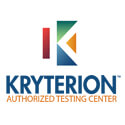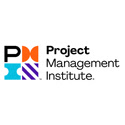MCSE Securing Windows Server 2016 (70-744)
About This Course
This course is developed to instill in-depth skills and knowledge to help you secure and protect IT infrastructure in enterprise IT ecosystem. The coursework focuses on concepts and methodologies to help you mitigate security/malware threats, configure admin credentials, utilize threat analysis techniques to identify security vulnerabilities. The course also teaches you to use DAC (dynamic access control) and encryption to restrict data access. Identify network threats and learn to protect admin rights and credentials with this course.
Learn to use auditing techniques along with advanced threat analysis tool in Windows Server 2016 to identify potential security problems. Learn to secure virtualization platforms, utilize deployment techniques like Nano server, containers, etc. to improve Windows Server 2016 security.
Who Should Attend This Course
The course is ideal for IT professionals who work with Windows Server who seek to hone their expertise and skills to securing Windows Server 2016 infrastructure in an enterprise IT ecosystem.
Why This Course
This course is your gateway to stand out from the crowd when it comes to securing Windows Server 2016. Hone the skills and expertise needed to secure and protect IT infrastructure for enterprise ecosystem with this course.
Since we know that enterprises all over the world are grappled with cybersecurity issues and cyber-attacks, which is the reason for the rise in the demand for security experts. Having a Microsoft certification is like icing on the cake in this scenario, as it will give you that competitive edge to secure a job with better pay prospects.
Securing Windows Server 2016 from Tech-Act is all that you need to master the skills to secure Windows Server 2016 infrastructure. Here are some exciting reasons to why Securing Windows Server 2016:
- In huge demand
- Microsoft certified thus, globally recognized
Helps you turn a master in:
- Securing admin credentials
- Deploying access workstations
- Restricting admin rights
- Managing access rights
- Addressing and mitigating threats and malware
- Analyzing activities using auditing techniques
- Implementing and configuring advance level threat analysis methods
- Configuring virtual machines and platforms
- Utilizing containers and security compliance toolkit to enhance security
- Protecting Windows Server 2016 data
- Securing and optimizing file services
- Securing and protecting network traffic using encryption and firewalls
- Protecting network traffic using message analyzer and DNSSEC.
Course Objectives
This course will help you to:
- Protect admin credentials and access
- Deploy and configure server administration
- Implement privileged access rights
- Mitigate security and malware threats
- Configure devices
- Understand advance level threat analytics
- Secure virtualization
- Secure workload infrastructure
- Secure server data using encryption and DAC
- Use firewall for controlling network traffic
- Update Windows Server
Prerequisites
Professionals who seek to enroll for this course are recommended to possess some amount of working knowledge pertaining to:
- Windows Server security concepts
- Networking basics including DNS, UDP and TCP/IP
- Active directory domain services
- Microsoft Hyper V Virtualization basics
Course Benefits
Professionals after completing this course will be able to:
- Secure admin credentials
- Deploy access workstations
- Restrict admin rights
- Manage access rights
- Address and mitigate threats and malware
- Analyze activities using auditing techniques
- Implement and configure advance level threat analysis methods
- Configure virtual machines and platforms
- Utilize containers and security compliance toolkit to enhance security
- Protect data
- Secure and optimize file services
- Secure and protect network traffic using encryption and firewalls
- Protect network traffic using message analyzer and DNSSEC
- Update Windows Server 2016





























